Abstract
The polymeric dyes Poly B-411, Poly R-481, and Poly Y-606 were examined as possible alternatives to the radiolabeled lignin previously used as a substrate in lignin biodegradation assays. Like lignin degradation, the decolorization of these dyes by the white rot basidiomycete Phanerochaete chrysosporium occurred during secondary metabolism, was suppressed in cultures grown in the presence of high levels of nitrogen, and was strongly dependent on the oxygen concentration in the cultures. A variety of inhibitors of lignin degradation, including thiourea, azide, and 4′-O-methylisoeugenol, also inhibited dye decolorization. A pleiotropic mutant of P. chrysosporium, 104-2, lacking phenol oxidase and ligninolytic activity was also not able to decolorize the polymeric dyes, whereas a phenotypic revertant strain, 424-2, regained this capacity. All of these results suggest that the ligninolytic degradation activity of the fungus was responsible for the decolorization of these dyes.
Full text
PDF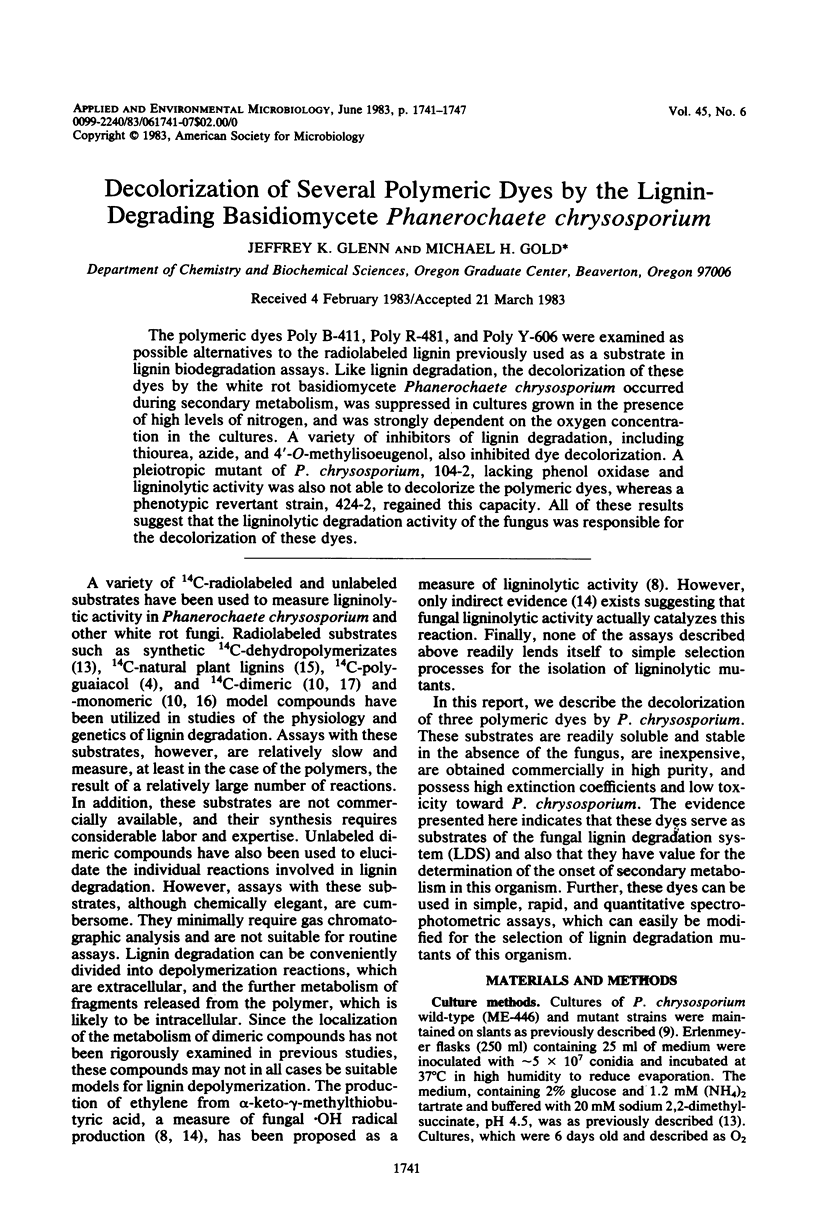
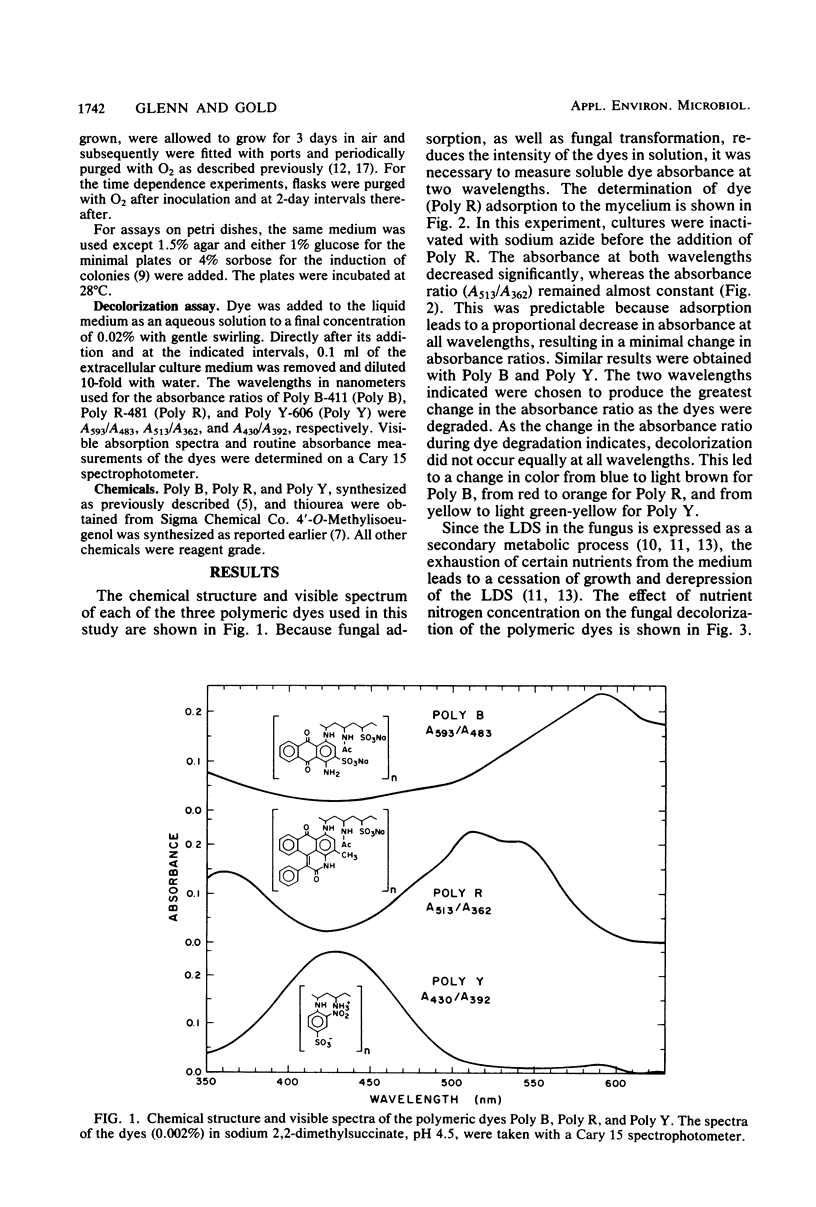
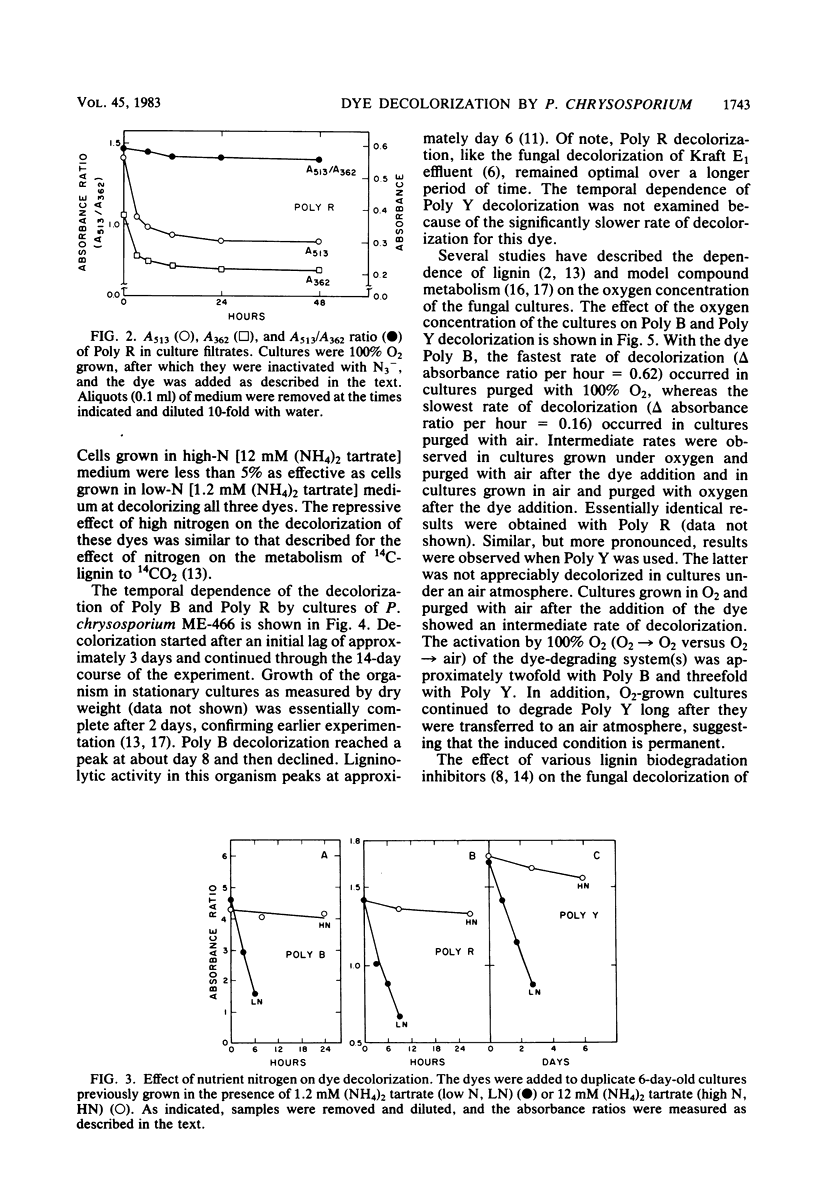
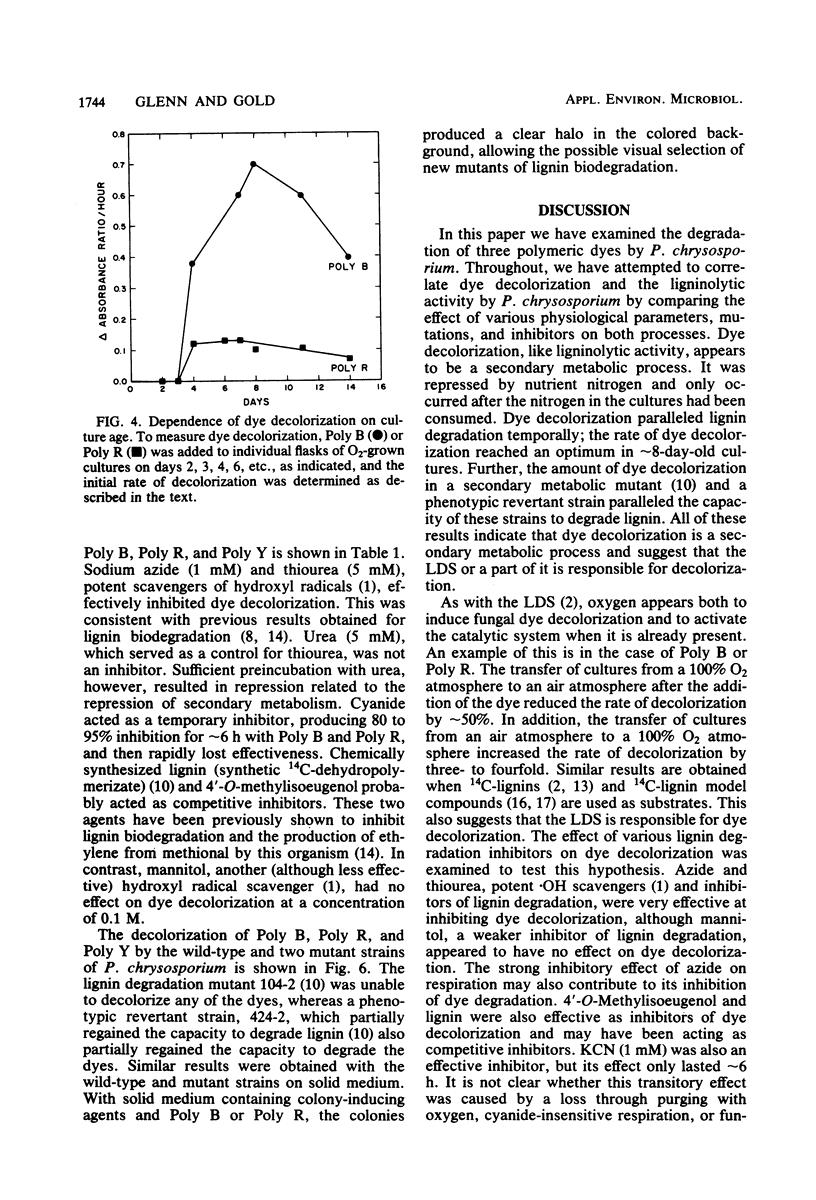
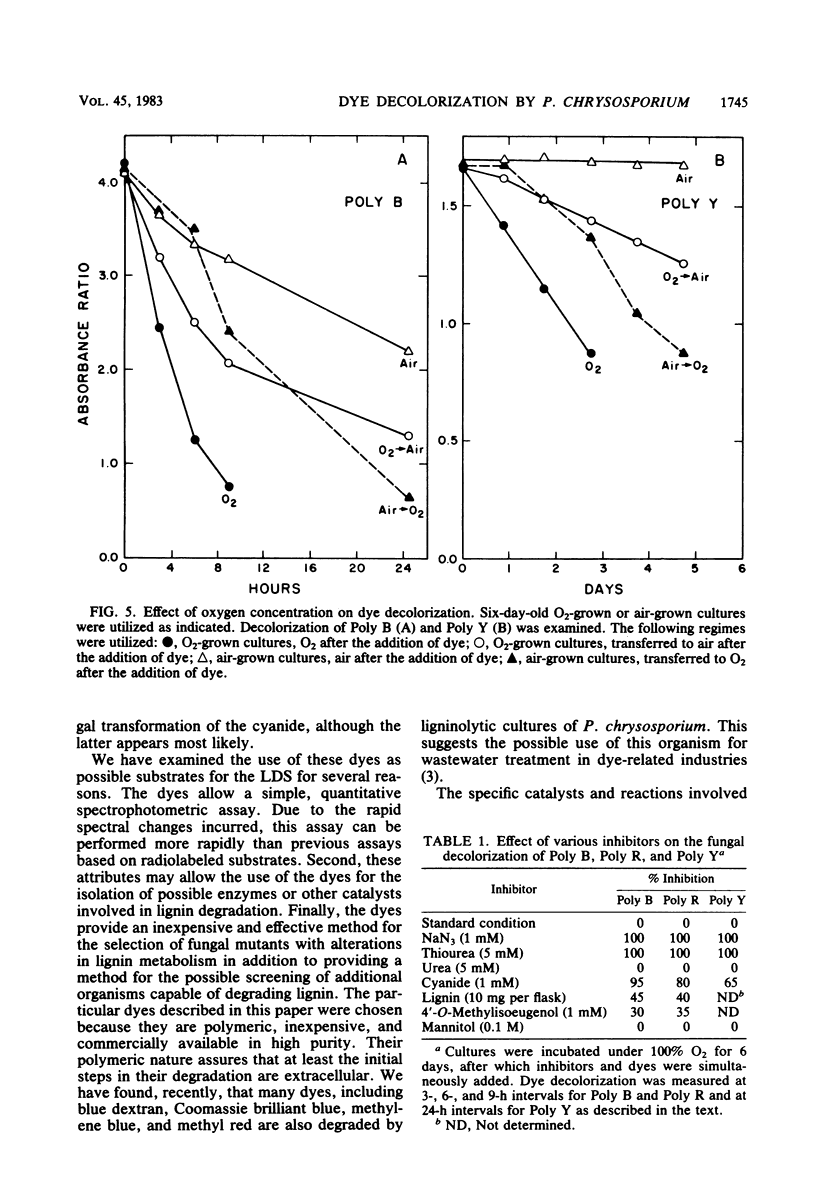
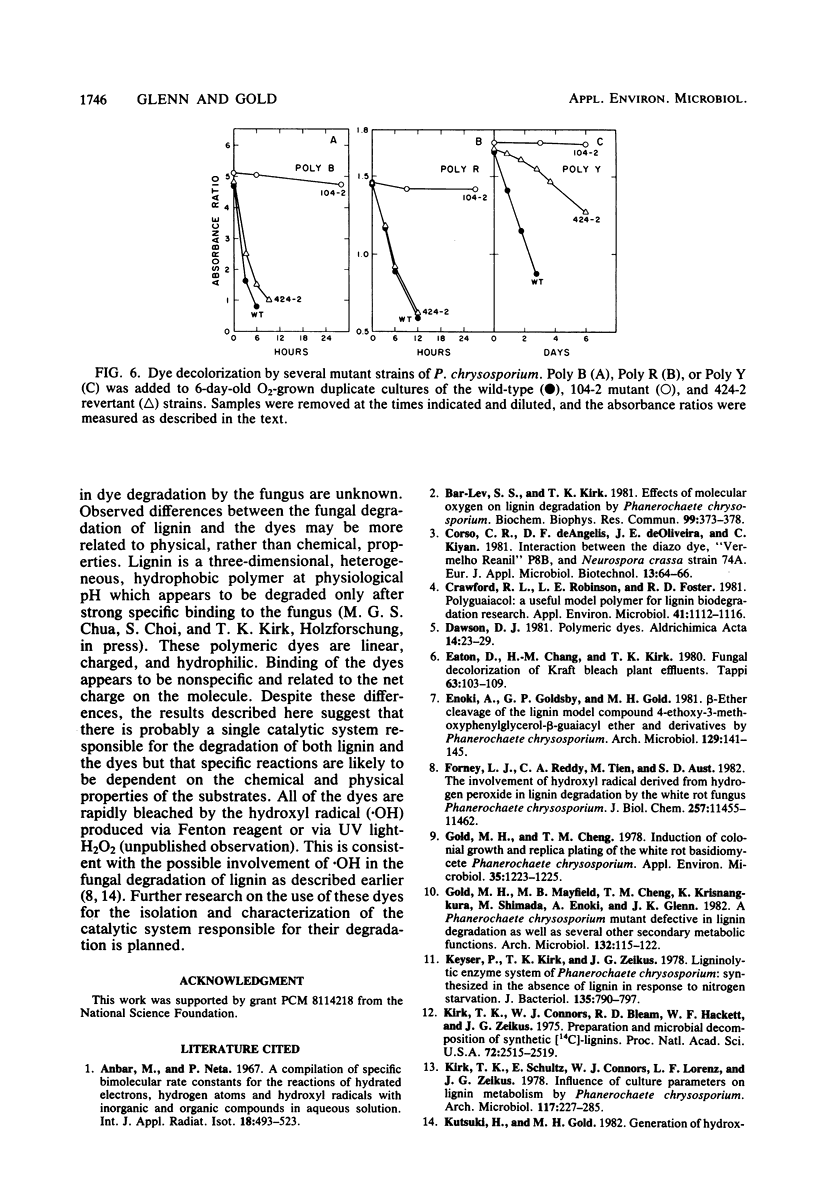

Selected References
These references are in PubMed. This may not be the complete list of references from this article.
- Bar-Lev S. S., Kirk T. K. Effects of molecular oxygen on lignin degradation by Phanerochaete chrysosporium. Biochem Biophys Res Commun. 1981 Mar 31;99(2):373–378. doi: 10.1016/0006-291x(81)91755-1. [DOI] [PubMed] [Google Scholar]
- Crawford R. L., Robinson L. E., Foster R. D. Polyguaiacol: a useful model polymer for lignin biodegradation research. Appl Environ Microbiol. 1981 May;41(5):1112–1116. doi: 10.1128/aem.41.5.1112-1116.1981. [DOI] [PMC free article] [PubMed] [Google Scholar]
- Forney L. J., Reddy C. A., Tien M., Aust S. D. The involvement of hydroxyl radical derived from hydrogen peroxide in lignin degradation by the white rot fungus Phanerochaete chrysosporium. J Biol Chem. 1982 Oct 10;257(19):11455–11462. [PubMed] [Google Scholar]
- Gold M. H., Cheng T. M. Induction of colonial growth and replica plating of the white rot basidiomycete Phanaerochaete chrysosporium. Appl Environ Microbiol. 1978 Jun;35(6):1223–1225. doi: 10.1128/aem.35.6.1223-1225.1978. [DOI] [PMC free article] [PubMed] [Google Scholar]
- Keyser P., Kirk T. K., Zeikus J. G. Ligninolytic enzyme system of Phanaerochaete chrysosporium: synthesized in the absence of lignin in response to nitrogen starvation. J Bacteriol. 1978 Sep;135(3):790–797. doi: 10.1128/jb.135.3.790-797.1978. [DOI] [PMC free article] [PubMed] [Google Scholar]
- Kirk T. K., Connors W. J., Bleam R. D., Hackett W. F., Zeikus J. G. Preparation and microbial decomposition of synthetic [14C]ligins. Proc Natl Acad Sci U S A. 1975 Jul;72(7):2515–2519. doi: 10.1073/pnas.72.7.2515. [DOI] [PMC free article] [PubMed] [Google Scholar]
- Kutsuki H., Gold M. H. Generation of hydroxyl radical and its involvement in lignin degradation by Phanerochaete chrysosporium. Biochem Biophys Res Commun. 1982 Nov 30;109(2):320–327. doi: 10.1016/0006-291x(82)91723-5. [DOI] [PubMed] [Google Scholar]
- Weinstein D. A., Krisnangkura K., Mayfield M. B., Gold M. H. Metabolism of Radiolabeled beta-Guaiacyl Ether-Linked Lignin Dimeric Compounds by Phanerochaete chrysosporium. Appl Environ Microbiol. 1980 Mar;39(3):535–540. doi: 10.1128/aem.39.3.535-540.1980. [DOI] [PMC free article] [PubMed] [Google Scholar]
- Zemper E. D., Black S. H. Morphology of freeze-etched Treponema refringens (Nichols). Arch Microbiol. 1978 Jun 26;117(3):227–238. doi: 10.1007/BF00738540. [DOI] [PubMed] [Google Scholar]


